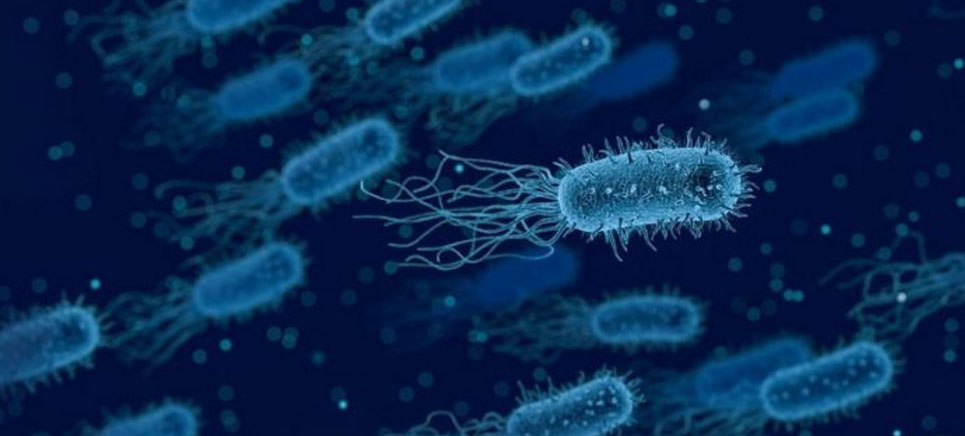Bacteria are single-cell, prokaryotic microorganisms found everywhere on Earth. Unlike viruses, bacteria are living organisms. Although, the words bacteria causes most people to feel concerned and afraid, but the truth is that only some bacteria cause diseases. Most of the bacteria are harmless and in fact some bacteria are good and useful for us! These bacteria prove to be beneficial for human beings in a variety of ways. In this article we are listing a few good bacteria and their usefulness to us.
1. Lactobacillus: The Curd Making Bacteria
Lactobacillus acidophilus is the most obvious choice for the number one spot. We all have read in schoolbooks that Lactobacillus acidophilus turns milk into curd by fermenting sugar into lactic acid. But this curd / yogurt making bacterium plays another extremely important role for us. L. acidophilus naturally resides in the small intestine of humans. Here, these bacteria help in manufacturing of vitamin K and other infection fighting agents. Vitamin K has two variants, namely K1 and K2. Out of these, vitamin K2 can only be produced by bacteria.
ALSO SEE: List of harmful bacteria
2. Rhizobium: The Nitrogen-fixing Bacteria
Rhizobium leguminosarum is a Gram-negative, rod-shaped, aerobic bacterium. It is introduced to science students in schools as the nitrogen-fixing bacteria. Plants need ammonia (NH3) for their growth. But there is not enough ammonia in atmosphere for plants to use. Bacteria of genus Rhizobium convert atmospheric nitrogen into ammonia for the use of plants. Rhizobium bacteria live in symbiotic (i.e. mutually beneficial) relationship with legume plants. Where do we find Rhizobium bacteria? Wee, they are found in the root nodules of the legume plants.
3. Streptomyces: The Good Bacteria
Streptomycin is a common antibiotic which is used for treating several bacterial infections, including tuberculosis, plague, tularemia, and rat bite fever. Streptomycin was discovered in 1943 from the bacteria Streptomyces griseus. It was the first antibiotic produced from bacteria.

4. Escherichia coli: Versatile Bacteria
E. coli is Gram-negative, anaerobic, rod-shaped bacterium which is commonly found in the lower intestine of warm-blooded organisms. Some serotypes of E. coli can cause serious food poisoning in humans. But on the other hand, this bacteria also serves as the host organism for the majority of work with recombinant DNA in biotechnology. Like Lactobacillus, E. coli also helps in production of vitamin K2. This bacteria is also used for the commercial preparation of riboflavin (vitamin B2) and vitamin K.
5. Bacillus thuringiensis: Pest-controlling Bacteria
B. thuringiensis lives in soil and is a Gram-positive bacteria. It is used as a biological pest control against moths and butterflies. These bacteria act as a Lepidopteran-specific insecticide and do not harm humans or wildlife.
6. Cyanobacteria
Cyanobacteria are Gram-negative, rod-shaped bacteria live in oceans. Also known as blue-green bacteria, they fix nitrogen for aquatic plants. These bacteria are also essential for maintaining coral reef ecosystem balance.
7. Bifidobacterium
Bifidobacterium is a genus of gram-positive, nonmotile, rod-shaped, anaerobic bacteria. These bacteria are present in the human gastrointestinal tract. B. longum produces lactic acid and maintain the pH level in the gut, thereby preventing growth of pathogenic organisms. B. longum is non-pathogenic and is often added to food products.
Use the citation below to add this article to your bibliography
"Good Bacteria: Useful, Beneficial Bacteria for Humans." Dashamlav.com. Web. 12 June 2025. <https://dashamlav.com/good-bacteria-useful-beneficial-bacteria/>
Dashamlav.com, "Good Bacteria: Useful, Beneficial Bacteria for Humans." Accessed 12 June 2025. https://dashamlav.com/good-bacteria-useful-beneficial-bacteria/
"Good Bacteria: Useful, Beneficial Bacteria for Humans." (n.d.). Dashamlav.com. Retrieved 12 June 2025 from https://dashamlav.com/good-bacteria-useful-beneficial-bacteria/
